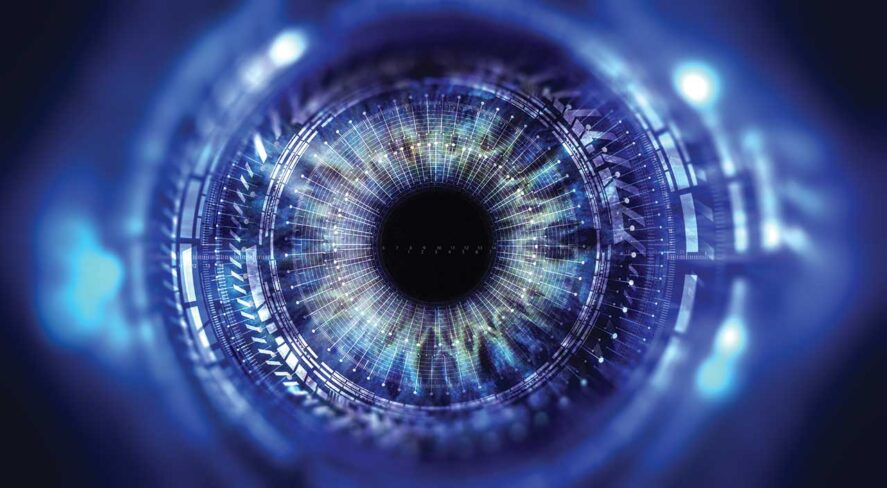Computer Vision Changes Everything

Security can now be smart, proactive and preventative

For decades, security has been built around static cameras, door and motion sensors, and access control systems that rely on predefined triggers. These systems, though, do not understand context. They just detect movement, record activity, and sound alarms, flooding security teams with false positives and forcing human operators to filter through the noise. It is an outdated model, reactive by design and full of inefficiencies.
But computer vision is flipping the script. Systems can now interpret and understand visual data in real time, moving beyond simple event detection into a world where they recognize intent, assess risk and take action. This shift changes security from passive observation to proactive intervention.
Eliminating False Positives
False alarms are the Achilles’ heel of traditional security. Sensors trip over environmental noise – shadows, swaying trees, harmless wildlife, or authorized personnel just doing their jobs. The result? Operators drowning in alerts, wasting time chasing ghosts and missing real threats.
Computer vision solves this. Instead of reacting to motion alone, it understands context. It can differentiate between an employee who is walking through a secured hallway and an intruder who is doing so. It can identify scene dynamics – like a person loitering near a secured entry, while holding a crowbar – that suggest something is off. This drastically reduces false positives and allows security teams to focus on what actually matters.
Real-Time Action and Decision Making
Legacy security relies on human operators reviewing alerts, deciding if they are real, and then determining what to do. That process takes time – time that bad actors exploit.
Computer vision changes the game. It enables real-time assessment, instant threat recognition, and automated response. It does not just detect a breach; it understands why it is happening and acts accordingly. A system powered by artificial intelligence (AI) does not wait for a human to review footage. It locks a door, alerts staff, or escalates a response before an incident unfolds. This makes security a preventative force, not just a reactive one.
Replacing Observe and Report With Proactive Intelligence
The old security model was simple: Watch, document and respond after something happens. But that is not good enough anymore. Security teams need more than observation, they need intelligence that helps them stop incidents before they escalate.
Computer vision moves beyond passive monitoring. It recognizes threats in the moment, analyzing movement, behavior and environmental factors to predict and prevent incidents. Instead of just recording events for later review, it actively assists security teams in making smarter, faster decisions.
The Vision First Approach to Access Control
Access control has been a friction point for security teams and their greater organization. The problem? These systems are rigid, require manual oversight and fail when credentials are lost, stolen or misused. They are noisy by design. An access-controlled door can do a great job at keeping people out, but the very mechanisms designed to prevent unauthorized access are also, by far, the largest noise contributors in the modern enterprise security operations center (SOC).
Noise is expensive in terms of human labor time. The time it takes to receive a door held open alarm, find the corresponding camera view, confirm it is just Bob from accounting stopping to talk to Sally from HR, plus the time it takes to make a note and resolve the alarm. For most enterprise businesses, that time cost is around four minutes per alarm. And think of how many of these non-incident alarms a given SOC addresses each day.
The difference between a propped-open door that has introduced a new risk vector in the perimeter and a person simply holding the door open while wrapping up a conversation is the kind of context that traditional systems cannot provide.
Computer vision offers a different approach. It enables the contextualization of access control events. The AI understands the difference between a door propped open by a trashcan and a door held open by an overly chatty colleague and it manages the alarm accordingly – alerting to the propped open door and quietly dismissing the held open one.
In the enterprise SOC, context is value, and noise is cost.
Holistic Safety Monitoring
Traditional security systems focus almost entirely on access control and perimeter defense, but they miss a broader reality: Real-world safety threats often happen inside secure areas.
Computer vision extends beyond security perimeters. It can detect hazards like fire, smoke and crowds suddenly rushing toward an exit in real time. It can recognize medical emergencies such as falls, unresponsive individuals and escalating confrontations, before anyone else notices. It transforms security from a siloed function into a system that actively protects people, not just property.
The Future of Enterprise Operations Is Vision-Led
A vision-led security operation is just the beginning.
Once vision intelligence becomes the foundation of physical operations, it unlocks possibilities far beyond security. Organizations can integrate building automation, logistics, and other critical functions, turning vision intelligence into the backbone of a smarter, more efficient enterprise operations platform.
Security is no longer just about watching – it is about understanding. Systems are not just detecting events, they are making informed decisions. The shift is already happening, and those who embrace it now will set the standard for what comes next.
